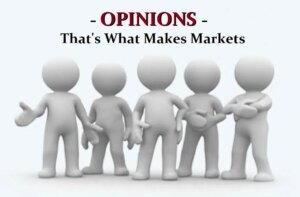The Bear Market Debate: Understanding Tariffs, Trade, and Economic Realities

Recently, Bloomberg made headlines with a stark proclamation: “With the Nasdaq 100 already in a bear market, soon it may be the S&P 500’s turn.” As we navigate through a sea of emotionally charged forecasts and commentary, it’s essential to critically analyze what’s at stake, especially regarding tariffs, trade policies, and their historical context on the US economy.
The Ground Reality of Tariffs and Trade
Our understanding of tariffs and free trade has been shaped significantly by historical events, including the monumental missteps taken during the Great Depression. In 1932, the narrative promoted by certain political factions emphasized that tariffs—particularly the Smoot-Hawley Tariff—were the root of economic collapse. While this branding has persisted, it oversimplifies a multifaceted issue. The efficacy of free trade is often touted as a pathway to prosperity, yet the aftermath of initiatives like the one taken by Bill Clinton in the 1990s, following China’s accession to the WTO, left numerous communities devastated. Jobs were lost, industries vanished, and the promise of GDP growth came at a severe cost for many American workers and towns.
A Visual Insight into American Economic Sentiment

As seen in the evolving narrative around tariffs and economic performance, public sentiment often finds itself in a tug-of-war between alarmism and optimism. Our loyal readers at Extreme Investor Network understand that while media hysteria can capture attention, what really drives markets are fundamentals and investor behavior—where fear and greed play primary roles.
The Myriad Faces of Economic Analysis
Having observed and traded in the world’s largest financial markets, our insights extend beyond just number-crunching. We aim to unravel the layers informing market movements. Your author has experience managing significant funds, engaging directly with key players like Deutsche Bank, and navigating turbulent economic environments. These insights are not based on theoretical premises but grounded in real-world experiences that echo through the financial markets.
The Current forecasts warrant skepticism
Amidst prevailing fears, it’s vital to distinguish facts from speculative forecasts. For instance, if the Nasdaq breaches the critical mark of 15,200 on a monthly basis—signaling a potential decline—it could echo through May and June; however, this is yet to unfold as we analyze historical trends and technical indicators. Rather than accepting sweeping narratives from the media, our community thrives on critically evaluating the implications each forecast presents.
However, as Democratic Senator Ron Wyden moves to test GOP support regarding tariffs linked to Trump’s trade policies, a complex interplay of interests emerges, reflecting the historical tensions between protectionism and free trade.
Reflecting on Historical Precedents
To truly understand our economic landscape today, referencing landmark legislation such as the Reciprocal Trade Agreements Act (RTAA) of 1934 provides revealing context. This act allowed the president to negotiate tariff reductions without Congressional approval—an initiative born from the despair of the Great Depression. The RTAA aimed for mutual concessions yet did little to alleviate market fears in a climate rife with uncertainty.
John Kenneth Galbraith’s analysis in The Great Crash 1929 discussed factors—like speculative excess and weak banking practices—that driven the collapse, while downplaying tariffs’ direct role. This perspective echoes among many contemporary economists and scholars who view tariffs as contributing factors rather than central culprits.
The Misconception of Tariffs as Sole Villains

Critics of Smoot-Hawley highlight that attributing the Great Depression solely to tariffs fails to account for broader economic dysfunctions. The established consensus points to a confluence of factors, with increasing international tensions and banking crises exacerbating a landscape already strained by market over-speculation.
In the context of today’s market, do we risk repeating the same narratives that overshadow a more nuanced understanding? Are we too quick to dismiss the fundamentals that govern economic cycles?
Conclusion: Where Do We Go From Here?
As we navigate through turbulent economic waters, it’s essential to maintain a balanced perspective. While both historical context and current policy choices shape our economic realities, embracing a critical and informed dialogue can empower our community at Extreme Investor Network to make educated investment decisions. Reportedly, the market moves in cycles where the majority is often wrong, and that tends to provide the energy for trend reversals.
In a climate marked by uncertainty, it’s your well-researched strategies and discernment that will ultimately guide investments through market volatility. Trust our insights and stay engaged—together, we will explore the complexities of economics and finance right here at Extreme Investor Network.

